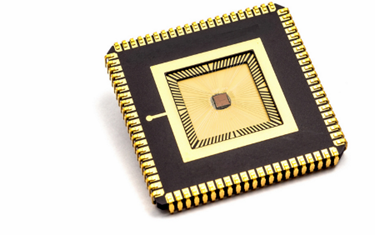imec, Holst Centre Unveil Time-Based ECG Readout Chip For Wearable Applications

Chip Combines High Area Performance with Small Form Factor and Low Power Consumption
Leuven (Belgium) –– Nanoelectronics research center imec and Holst Centre, an open-innovation initiative set-up by imec and TNO, today presented a 0.6V ECG readout chip in 40nm technology based on time-domain circuit techniques. The chip maintains consistent beat detection capabilities, even under movement (~40mVpp), paving the way to a low cost, low power multi-sensor Systems-on-Chip (SoCs) solution for wearable medical applications.
There is a clear need for emerging applications in personal healthcare to add more digital signal processing capabilities and memory storage within the system itself. While today’s digital ICs and memory ICs benefit from technology scaling in terms of power and area, this has yet to be achieved for analog readout electronics. Current state-of the-art analog circuit techniques don’t result in a significantly reduced area in scaled technologies, and due to the accompanied reduced supply voltage (VDD) with scaled technologies, the analog front-end readout chip faces significant challenges in combining a large dynamic range with small size and low power consumption.
The new ECG readout chip is only 0.015mm2 implemented in TSMC 40nm CMOS. It can handle up to 40mVpp AC sigma and up to 300mV DC-electrode offset while consuming only 3.3μW from a 0.6V supply. By acquiring an ECG signal from the noise-stress database, the system does not saturate and is able to maintain a consistent beat detection capability even in presence of vigorous motion (~40mVpp). This was achieved by implementing a time-domain-based readout architecture, which leverages the benefits of technology scaling and it avoids the need for area intensive analog circuitry, such as high-gain amplifiers and passives. The readout chip achieves performance that is comparable with current state-of-the-art implementations at a fraction of the area.
“Our breakthrough readout ECG chip paves the way to low-cost, low-power multi-sensor systems for ambulatory medical applications,” stated Nick Van Helleputte, team leader biomedical circuits at imec. “Furthermore, it opens additional innovation paths for beyond 40nm analog front-end design, leveraging the power and area benefits of scaled technology in digital architectures.”
About imec
Imec performs world-leading research in nanoelectronics. Imec leverages its scientific knowledge with the innovative power of its global partnerships in ICT, healthcare and energy. Imec delivers industry-relevant technology solutions. In a unique high-tech environment, its international top talent is committed to providing the building blocks for a better life in a sustainable society. Imec is headquartered in Leuven, Belgium, and has offices in Belgium, the Netherlands, Taiwan, US, China, India and Japan. Its staff of more than 2,300 people includes almost 700 industrial residents and guest researchers. In 2014, imec's revenue (P&L) totaled 363 million euro.
Imec is a registered trademark for the activities of IMEC International (a legal entity set up under Belgian law as a "stichting van openbaar nut”), imec Belgium (IMEC vzw supported by the Flemish Government), imec the Netherlands (Stichting IMEC Nederland, part of Holst Centre which is supported by the Dutch Government), imec Taiwan (IMEC Taiwan Co.) and imec China (IMEC Microelectronics (Shanghai) Co. Ltd.) and imec India (Imec India Private Limited).
About Holst Centre
Holst Centre is an independent open-innovation R&D centre that develops generic technologies for Wireless Autonomous Transducer Solutions and for Systems-in-Foil. A key feature of Holst Centre is its partnership model with industry and academia around shared roadmaps and programs. It is this kind of cross-fertilization that enables Holst Centre to tune its scientific strategy to industrial needs.
Holst Centre was set up in 2005 by imec (Flanders, Belgium) and TNO (The Netherlands) with support from the Dutch Ministry of Economic Affairs and the Government of Flanders. It is named after Gilles Holst, a Dutch pioneer in Research and Development and first director of Philips Research.
Located on High Tech Campus Eindhoven, Holst Centre benefits from the state-of-the-art on-site facilities. Holst Centre has over 180 employees from around 28 nationalities and a commitment from more than 45 industrial partners.
Source: imec
